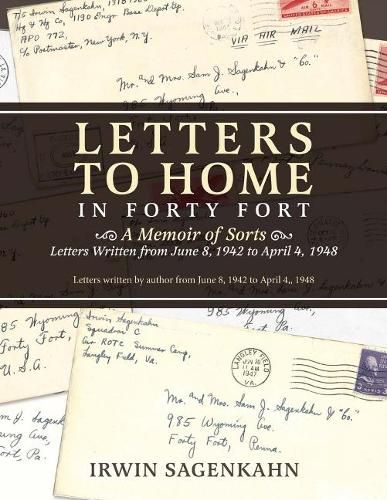Readings Newsletter
Become a Readings Member to make your shopping experience even easier.
Sign in or sign up for free!
You’re not far away from qualifying for FREE standard shipping within Australia
You’ve qualified for FREE standard shipping within Australia
The cart is loading…






In June 1942, Irwin Sagenkahn was eighteen years old and about to begin his life as a student at Penn State College. In May 1943, he had temporarily abandoned his education in favor of enlisting in the United States Army. The next few years saw him serving in the American Armed forces in France, the Philippine Islands and Japan. After he was discharged from the Army, he was able to return to school graduating in June 1948. Over the course of these six years, his parents saved an astounding 402 of his letters. Those letters are presented here and lovingly and painstakingly paint a picture of the life of a young man who served in one of the greatest conflicts the world has ever seen. The letters are accompanied by notes as part of the letters explaining such things as the relationship between the author and people mentioned in the letters, notes about his unit’s role in the invasion of Japan, and notes that finally bring to light subjects that were censored by wartime restrictions. The result is a sense of authenticity, giving readers an intimate look into Irwin Sagenkahn’s early life.
$9.00 standard shipping within Australia
FREE standard shipping within Australia for orders over $100.00
Express & International shipping calculated at checkout
In June 1942, Irwin Sagenkahn was eighteen years old and about to begin his life as a student at Penn State College. In May 1943, he had temporarily abandoned his education in favor of enlisting in the United States Army. The next few years saw him serving in the American Armed forces in France, the Philippine Islands and Japan. After he was discharged from the Army, he was able to return to school graduating in June 1948. Over the course of these six years, his parents saved an astounding 402 of his letters. Those letters are presented here and lovingly and painstakingly paint a picture of the life of a young man who served in one of the greatest conflicts the world has ever seen. The letters are accompanied by notes as part of the letters explaining such things as the relationship between the author and people mentioned in the letters, notes about his unit’s role in the invasion of Japan, and notes that finally bring to light subjects that were censored by wartime restrictions. The result is a sense of authenticity, giving readers an intimate look into Irwin Sagenkahn’s early life.